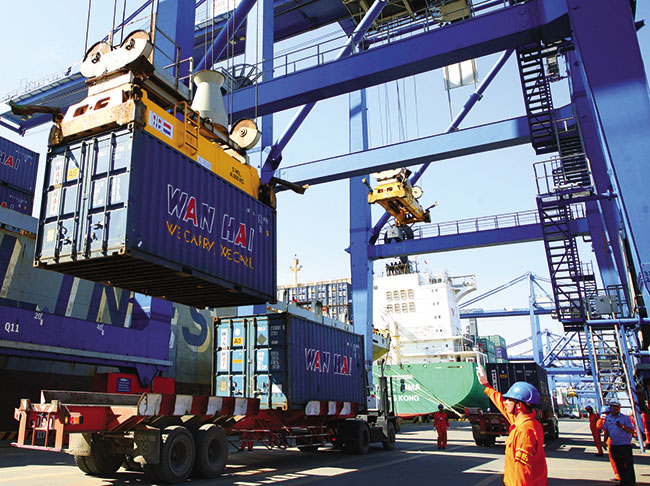FTAs can keep
economy on track
Although the
World Bank has lowered Vietnam’s growth forecast for 2016, it remains
optimistic about the country’s economic prospects resulting from free trade
agreements later this year.
Last week,
the World Bank issued its East Asia and Pacific Economic Update, in which it
reduced its projection for Vietnam’s growth rate in 2016. The January
estimate of 6.6 per cent was reduced to 6.2 per cent.
“The
moderate growth rate of 6.2 per cent is due to slower private consumption and
investment growth, natural disasters, and slower exports,” said Sudhir
Shetty, chief economist of the World Bank’s East Asia and Pacific region.
“Local
consumption remains weak, while the government is tightening public spending,
which is one of the keys to growth,” he said. “Notably, Vietnam’s agriculture
has also been seriously affected, stunting growth.”
The Ministry
of Agriculture and Rural Development stated that about 10 per cent of 1.5
million hectares of rice planted in the winter-spring crop (February-June) in
Mekong Delta was affected by drought. Meanwhile, saline intrusion has damaged
about one million tonnes of rice.
According to
the World Bank, Vietnam’s agricultural sector is expected to grow just 1 per
cent this year, down from 2.4 per cent last year. The industrial sector
is projected to climb 9 per cent this year, down from 9.6 per cent last year.
In addition,
since early last year, Vietnam’s exports have been dropping in volume. Export
growth moderated to 8 per cent in 2015, down from 13.8 per cent in 2014. In
this year’s first quarter, the growth rate is 4.1 per cent, compared to a
rise of 6.9 per cent for the same period last year.
Despite
these tapering figures, the World Bank remains upbeat about Vietnam’s
economic prospects, saying that the predicted 6.2 per cent would still be far
higher than the average of 4.8 per cent in many developing nations in the
East Asia and Pacific region.
“Among the
large developing Southeast Asian economies, the Philippines and Vietnam have
the strongest growth prospects,” Shetty said. “Vietnam will see continued
strong growth in domestic demand and manufacturing exports. The baseline
outlook for 2016 is positive on balance.”
Sandeep
Mahajan, a lead economist from the World Bank in Vietnam, said that the
free trade agreements – including the Trans-Pacific Partnership (TPP) – would
bring about huge trade and investment opportunities for Vietnam and its
partners.
The World
Bank’s preliminary estimates suggest that the TPP could add about 8 per cent
to Vietnam’s GDP, 17 per cent to its real exports, and 12 per cent to its
capital stock, for the 2015-2035 period.
The
estimates indicate that the largest area of benefit from the TPP in relation
to GDP comes from the impact of tariff reductions (52 per cent in 2035),
followed by the reform of non-tariff measure impacts (32 per cent), and
finally, liberalisation of services restrictions (16 per cent). Manufacturing
exports, comprising 58.1 per cent of Vietnam’s 2015 real exports, are
expected to increase 30 per cent during 2015 – 2035.
By Thanh Thu, VIR
|
Thứ Tư, 20 tháng 4, 2016
Đăng ký:
Đăng Nhận xét (Atom)

Không có nhận xét nào:
Đăng nhận xét